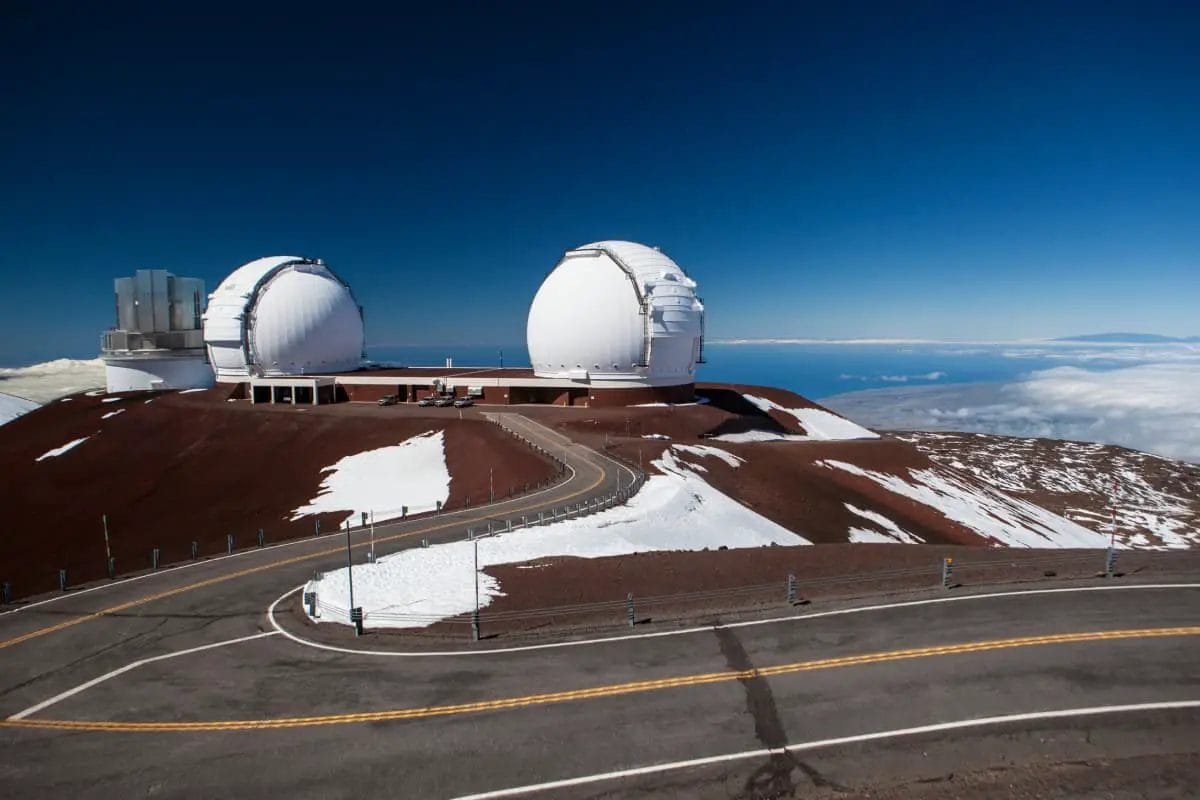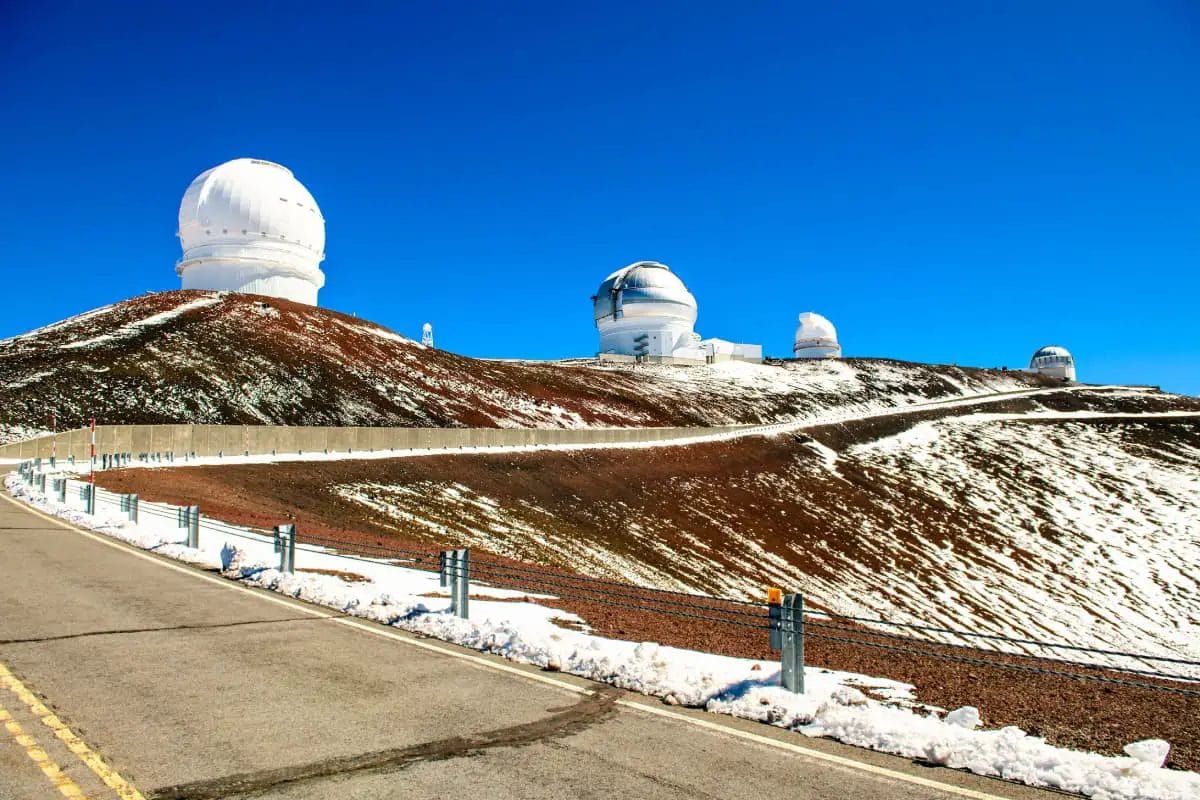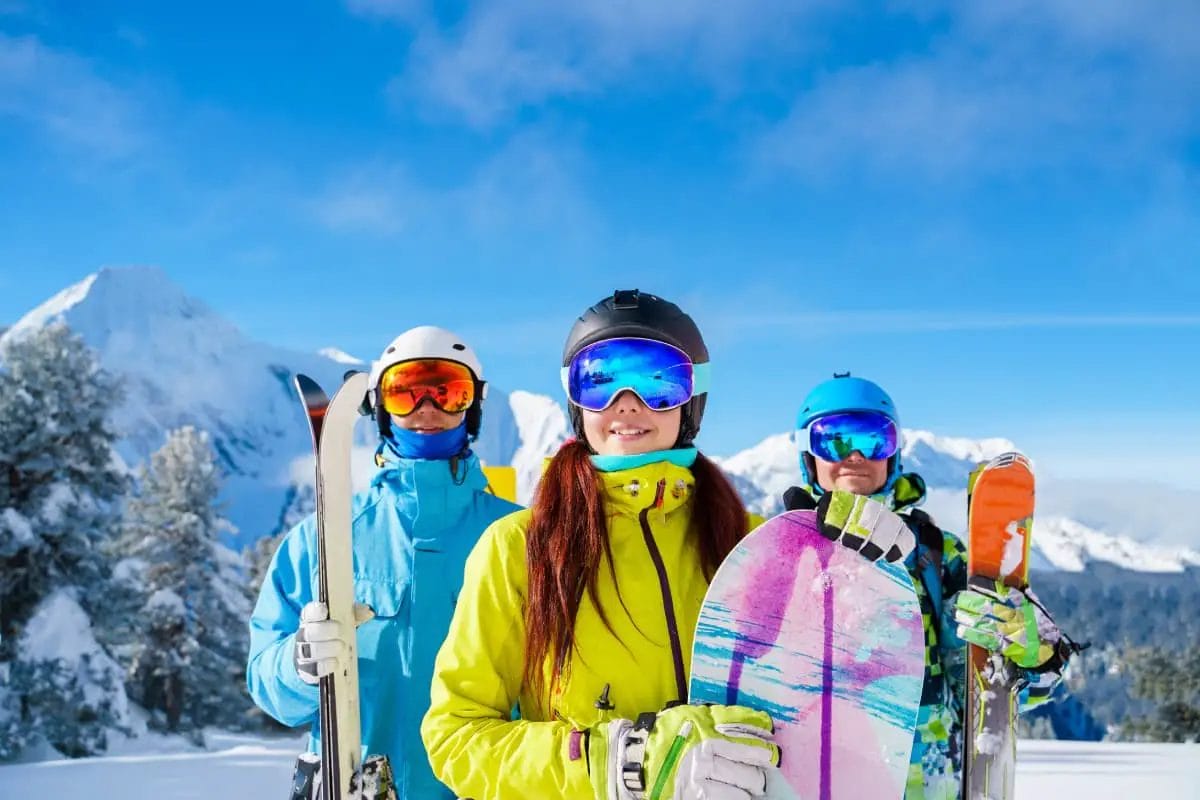Does It Snow in Hawaii?
When you think of Hawaii, you likely think of a tropical paradise with sandy beaches, temperate weather, and lush rainforests…but does it snow in Hawaii? Actually! If you climb up high enough on one of the island’s Maunas, or mountains, you’ll find that the air becomes brisk and chilly, and you might even land your feet in the snow.
It snows in Hawaii in areas where the elevation is between 9,000 to 12,000 ft (2743.2 to 3,657.6 m) on the two largest Maunas of The Big Island and Haleakala. However, exceptional weather conditions have resulted in snow reaching elevations as low as 6,200 feet (1889.8 m) in Maui.
If you want to catch sight of some snow in Hawaii, you’ll need to visit areas with high elevation. So, let’s discuss these locations and talk more about how cold and snowy the tropical island of Hawaii can get. I’ll also tell you when to expect the most snow in Hawaii and how you can ski and snowboard on your trip.

Where Does It Snow in Hawaii?
It snows in Hawaii on Haleakala, Mauna Kea, and Mauna Loa, which have the highest elevation in all of the Hawaiian islands. These volcanoes can each receive 51.25 in (130.2 cm) of snow annually. The average daily snow on each peak is around 3 in (7.6 cm).
Hawaii’s looming volcanoes may conceal hot calderas of magma, but on an average day in the winter, they look like inconspicuous snow-capped mountains. Each one has a different elevation, which results in varying amounts of snowfall yearly.
So, let’s look at each one and discuss the amount of snow they receive.
Mauna Loa
Mauna Loa is the largest volcano on earth, with a whopping elevation of 13,681 feet (4,170 m) above sea level. However, this mound is much broader than tall, which is how it got its name, meaning “long mountain” in Hawaiian. According to the National Park Service, this active volcano makes up more than 51% of the Hawaiian mainland.
Most meteorologists estimate that the powder is 3 inches (7.62 cm) deep when Mauna Loa has a snow cap.
The accumulated average annual snowfall is 51.25 in (130.2 cm) on Mauna Loa.
Records for the snowfall on this mountain are scarce since few people have dared to summit it, especially during the winter. The most recorded snowfall is 5 inches (12.7 cm), dusting Mauna Loa in 1958.
However, this record was likely broken in 2016, when Mauna Loa and Mauna Kea saw approximately 2 feet (0.6 m) of snow during a blizzard.
Then, in December 2021, Mauna Loa was under another record-breaking blizzard warning. On this day, the mainland saw 14.26 inches (36.22 centimeters) of precipitation, and aerial shots from NASA’s Landsat Land Imager displayed thick white snow on Loa’s summit. Although no one ever formally recorded the snowfall at the peak, we can only assume that it was more than the snow of 2016 and 1958.
Mauna Kea
Mauna Kea, the “White Mountain,” is a dormant volcano on the island of Hawaii. Mauna Kea is the tallest volcano on the island, measuring 13,796 feet (4,205 m) above sea level.
Because Mauna Kea is barely taller than Mauna Loa and they are both on The Big Island, they have similar snowfall rates and frequencies. Likewise, few people dare to climb Mauna Kea to record snowfall, but the precipitation and records for snowfall on this peak are identical to those of Mauna Loa.

Haleakala
Haleakala on Maui island is 10,023 ft (3,005 m) above sea level, slightly shorter than Mauna Loa and Mauna Kea. Accordingly, this dormant volcano sees less snow than the peaks on The Big Island. Some years, it does not get any snow.
The record for the most snowfall on Haleakala is 6 inches (15.24 cm), recorded in 1938.
How Often Does It Snow in Hawaii?
It frequently snows in Hawaii, although the warmer temperatures close to sea level turn this snow into rain before it hits the beaches and forests. This snow generally only sticks on the volcanic mountaintops of Mauna Loa and Mauna Kea for three to six days before the daily temperatures rise.
Snow is not uncommon on Mauna Kea and Mauna Loa, even during the summertime. However, it’s most common during the winter, from October to February.
On average, Mauna Loa and Mauna Kea feature snow caps for 197 days per year. On the other hand, according to the National Weather Service, Haleakala only gets snow once every two to three years.
As it stands, it has never snowed on the beaches in Hawaii.
However, in some rare cold snaps, snow has reached places such as Polipoli State Park in Maui, which is only 6,200 feet (1889.8 m) above sea level. This park saw 4-foot (1.2 m) drifts of snow during a blizzard in 2019, and experts believe that this was likely the first time since the ice age that snow had hit the area.
So, perhaps, in the future, snow will creep down from Hawaii’s scenic volcanoes and dust the forests and beaches. Only time, and a bit of a cold snap, will tell.
How Cold Does It Get in Hawaii?
It gets cold enough for snow in Hawaii, but only on the peaks of the tallest volcanoes. Hawaii is the coldest in January when the average low temperature is 68° F (20° C). However, the annual average temperature atop Mauna Kea and Mauna Loa is 32° F (0° C).
While temperatures on the beaches may never get cold enough for you to start layering up, the peaks of Kea and Loa are consistently frigid. Even in summer, the nightly lows on these volcanoes can reach 28° F (-2.2° C) with wind chill, creating ideal conditions for snow and ice.
Hawaii is unique because it encapsulates many climates in a tiny island cluster. If you want to learn more and prepare for the frigid mountain peaks of this island paradise, check out my other article, How Cold Does It Get In Hawaii?
Can You Ski and Snowboard in Hawaii?
You can ski and snowboard in Hawaii. Mauna Kea is the best place to ski and snowboard, but you will not find a ski resort on the mountain. Instead, you will have to drive to a suitable location and trek up the volcano to ski or snowboard down.

While skiing and snowboarding in Hawaii are doable, you can’t expect a luxurious resort or ski lift. You will have to bring all of your own equipment. The conditions can also be dangerous, so you might want to sit out on this ski trip if you are a beginner.
Most people rent a four-wheel-drive vehicle to drive up the winding and often icy mountain slopes from Waimea to Mauna Kea. However, many Hawaiian car rental companies prohibit people from driving up Saddle Road to the summit of Mauna Kea because of how dangerous the drive can be. So, if you plan to make this trip, research ahead of time.
While the snow atop Mauna Kea is thick, it’s also littered with volcanic rocks. You will need to be cautious when boarding or skiing.
However, once you get to the perfect launch spot, you can expect to be one of the very few people there, which can be pretty exhilarating. This also means you’ll need to bring plenty of safety gear, such as a first-aid kit and a telephone or radio to ensure that you ski and snowboard safely. In addition, you should never go alone.
It is also critical to remember that Mauna Kea is a sacred site, and you should never litter or disrespect the area. Skiers and snowboarders are only welcome here if they are polite and respectful, and do not damage the land.
Final Thoughts: Does It Snow in Hawaii?
Although you can’t expect snow on the sandy beaches or in the forests of Hawaii, it’s not uncommon to see snow atop Mauna Kea and Mauna Loa, the two largest volcanoes on The Big Island. These mountains are usually capped with snow, even in the summer, and it’s possible to go skiing there if you come prepared.

